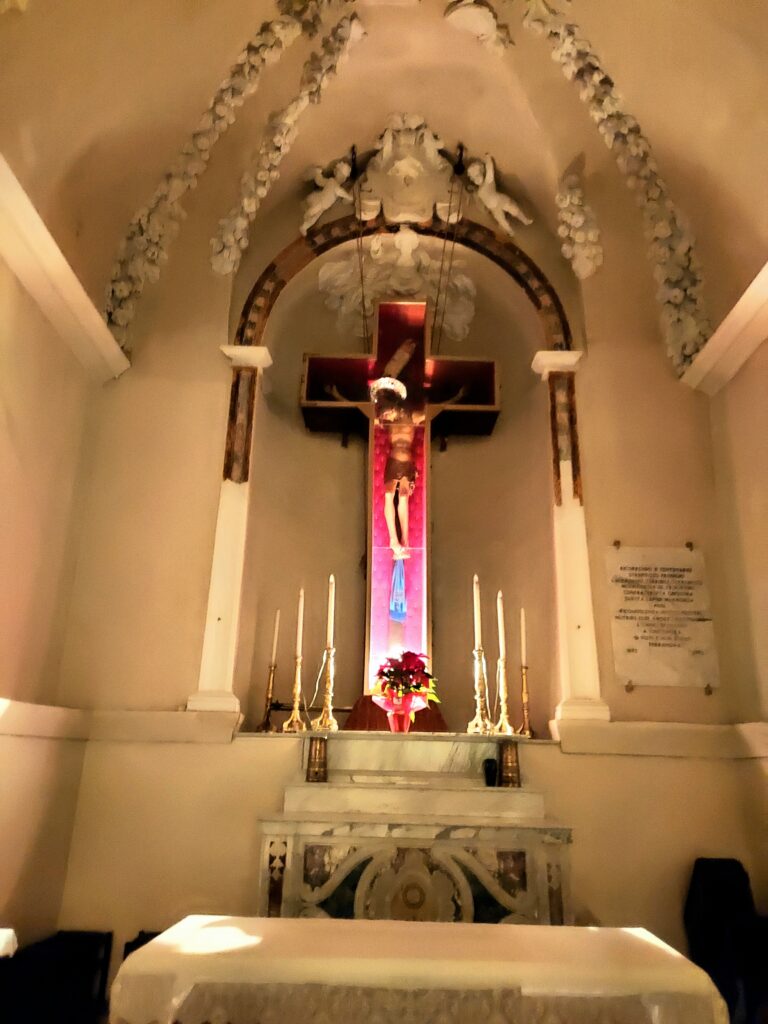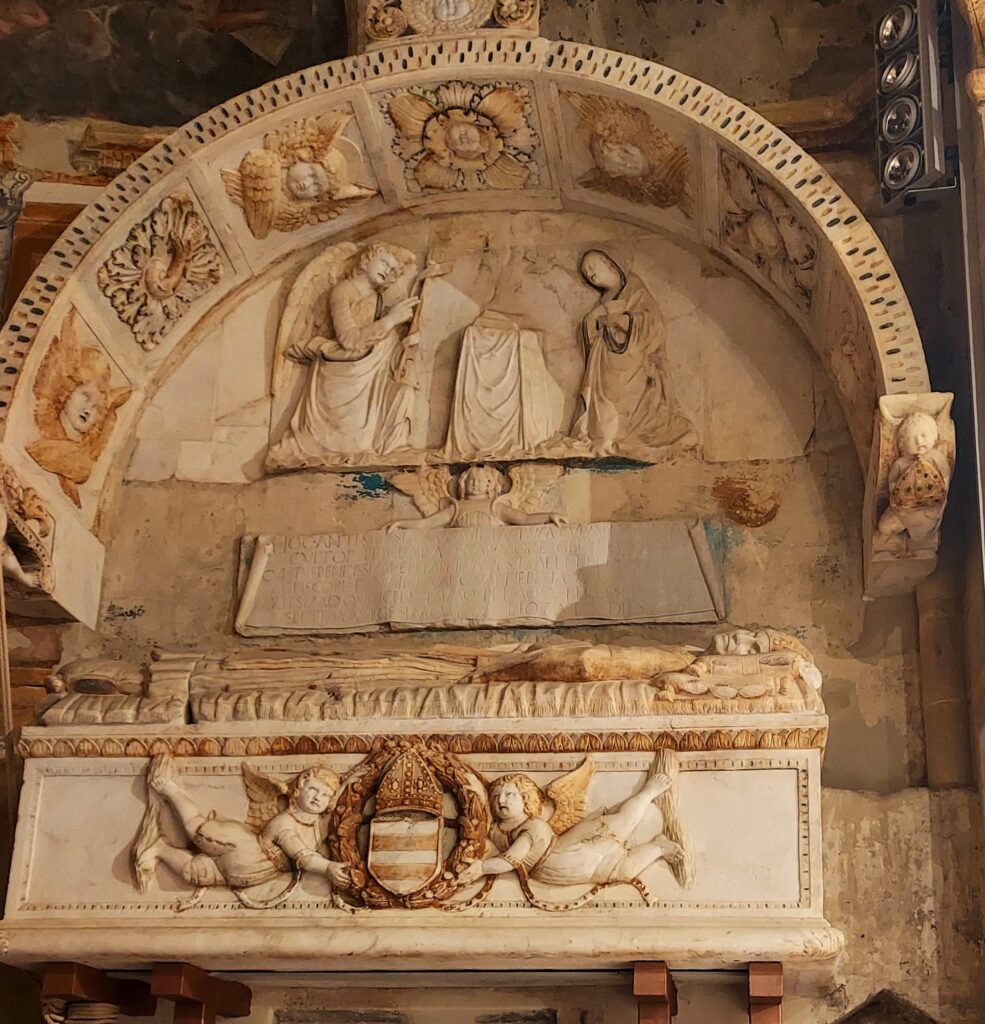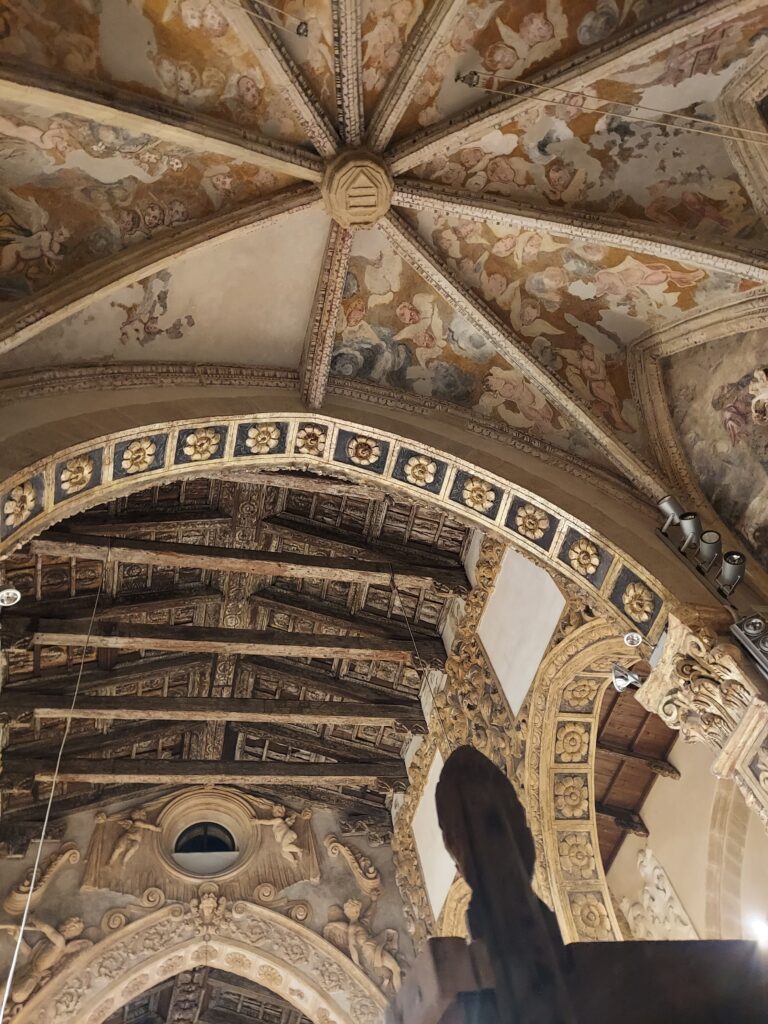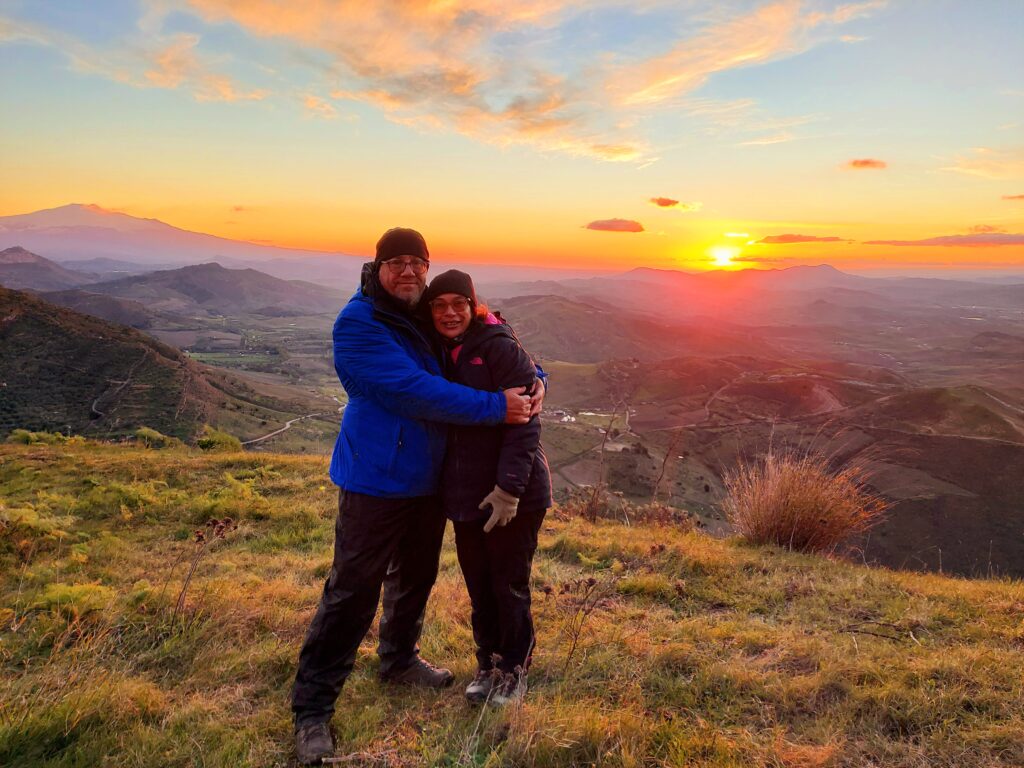From Valguarnera Caropepe the walk continues north and uphill to Assoro.
Assoro is connected to Malta because the ruling Feudal family of Assoro was the Valguarnera family from Aragon and Giacomo Valguarnera, now buried in the Cathedral of San Leone in Assoro was Bishop of Malta during the Aragonese rule. On the Maltese segment of the Camino Maltés we pass by the Benedictine Monastery and Church of St Peter in Mdina. This cloistered monastery was founded by him. He was also connected to the church of Attard in Malta among other parishes.




The 12th century Basilica, where Bishop Giacomo Valguarnera is buried, is the main attraction of this city. The loft of the basilica is also used as an albergue but – pilgrims be warned – the church bells, in the belfry in line with the loft, toll every 15 minutes, 24/7. The basilica of San Leone was founded in the late 12th century as a royal chapel under the patronage of Constance I, Queen of Sicily, also known as Constance of of Altavilla. Constance was the daughter of Roger II of Sicily. In 1933, the church was declared a National monument.
Assoro (Àsaru in Sicilian or Assorus/Assoros in Latin and Greek ) is an ancient Citadel with a Norman fort at its highest point.
It is remembered mostly for the fierce battle that took place in WWII immortalised in Farley Mowat’s account ‘’And No Birds Sang’. It was a pyrrhic victory for the Allied forces as they pushed with the re-conquest and liberation of Europe through Sicily and, later, Italy from Axis control.
Sunset from a panorama point in front of the basilica of San Leone and sunrise from the top of the citadel, close to the Norman fort, are among the simple pleasures that a pilgrim on this cammino should look forward to.

From Assoro one continues first through Nirosia, then through a valley and then steeply uphill to to Nicosia following the .gpx route.
